by Heather Plett | Sep 24, 2014 | circle, Community, Uncategorized
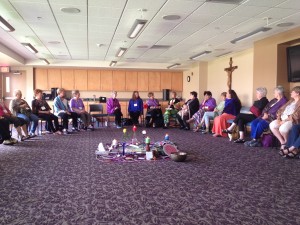 Something happens when women come into circle.
Something happens when women come into circle.
Tears flow.
It’s inevitable. When women feel held in a way they haven’t felt for a long, long time, their release valves open and the emotions they’d held tightly under their control begin to seep out through their eyes.
Something else happens after the tears begin to flow.
Women apologize.
Conditioned for most of their lives to distrust the tears and to see them as a sign of weakness, they worry that the tears won’t be welcome, that they’re inappropriate, that they communicate something they dare not communicate, or that the opening of that valve isn’t something they can undo and the tears will never stop. I see it every time I host a soul-opening class or retreat. Our tears trigger our shame and fear.
Women’s tears are a dangerous thing. They’re dangerous to the men (and women) who don’t know how to access their own emotions and who therefore think they’re being manipulated by others’ emotions. They’re dangerous to those who realize that women in touch with their emotions are harder to control. They’re dangerous to workplaces, schools, and churches that are built on structure, control, logic and order. They’re dangerous to those who release them because we don’t know where they will lead us or what they will shift in our lives.
Tears are dangerous because they open us up to emotions uncontrolled, secrets untold, stories unlived, and longings untapped.
But in that circle of women, if it is well hosted, tears are always welcome. Because we know – in our bones we know – that tears release us, they free us, they strengthen us, and they give us power. In last week’s circle (at Gather the Women‘s annual gathering), in fact, when we were invited to share an item that represented power in our lives, one women brought out a kleenex. “Because my tears give me power,” she said. Indeed.
So after we apologize out of our conditioning to do so, we loosen and relax into the tears and whatever else may come with them.
When women gather, some of the stories that bring tears are the stories about how our collective sisterhood, around the world and throughout the generations past, have been silenced, raped, murdered, and burned at the stake. For speaking out, for learning to drive, for challenging the patriarchy, for daring to follow their own spiritual paths, for being in the path of conflict, or simply for being women.
Last week those stories kept coming up in the opening circle and then in subsequent smaller circles. “We have generations of wounds,” some women said, “and we are afraid to cry about it in case we won’t know how to stop. We are afraid to cry because our tears have brought on the violence and sometimes even death.”
“We are watching our sisters die,” said others. “We are helpless in the face of those who are mutilating the genitals of our sisters in Ethiopia. We can do so little about the murdered and missing Indigenous women in Canada. We feel lost when we hear about young girls being sold into sexual slavery in India. We can do nothing about the young girls taken from their school by rebels in Nigeria.”
“We feel lost and helpless, but the only thing we know how to do is stuff in our emotions and carry on. We carry on because we are afraid to cry, afraid to care too much, afraid to truly allow ourselves to feel these deep wounds, afraid that we’ll be made fun of by those in control.”
At the end of a long day of hearing these stories, I felt weary and a little lost. I did what I almost always do – I carried my sadness into the woods. I walked up into the hills near the retreat centre, my shoulders weighted down with unresolved stories and unwept tears.
 Up in the hills, I noticed an interesting thing. The hills were covered with low shrubs that had turned a brilliant shade of red (that I later learned were sumac) and had grown equally red seed clusters.
Up in the hills, I noticed an interesting thing. The hills were covered with low shrubs that had turned a brilliant shade of red (that I later learned were sumac) and had grown equally red seed clusters.
I stood on the path at the foot of a hill covered in red, and suddenly I didn’t see leaves anymore. Suddenly I saw a river of blood flowing down the hill.
It was the blood of centuries of women murdered and raped simply because they were women. It was the blood of the murdered and missing Indigenous women in my own country, the blood of the young women I met in Ethiopia who were beautiful and full of life when I met them and dead a few months later because they’d all been subjected to female genital mutilation with the same dirty knife, the blood of the women who’d been burned because their love of ritual and feminine spirituality was too dangerous and they were branded as witches, and the blood of so many other women all over the world who’ve suffered similar fates.
It was also my own blood, shed when a rapist climbed in my bedroom window and took my virginity away.
And it was the blood of Mother Earth, wounded by our corporate greed, destruction and insatiable hunger for her resources.
I stood there, at the foot of that river, and was suddenly overcome with emotion. I sat down at the base of a tree, surrounded by red, and I wept. I wept the unshed tears of my own stories. I wept for the women whose tears had dried up and who could cry no more. I wept for the way we’ve bottled up our tears, for the way we’ve let fear and shame keep us silent, and for the way we’ve been conditioned to accept our powerlessness in the face of so much brutality.
 When the weeping subsided, I opened my journal and began to draw the river of blood. As I sketched, the words came to me… “The river of blood will heal this land.”
When the weeping subsided, I opened my journal and began to draw the river of blood. As I sketched, the words came to me… “The river of blood will heal this land.”
It didn’t make sense. How could the blood of our own woundedness heal anything? How can the victim be the healer?
I didn’t want to write it down, because I didn’t quite know what it meant and I resisted it. Perhaps I resisted because I was more inclined to look for blame and an external resolution than an internal path to healing.
But write it down I did. And suddenly the river was no longer the blood of pain and woundedness – it was the blood of menstruating women. The blood of birth and renewal. The blood of women’s power to co-create and regenerate. The blood of the new life that comes after the healing tears.
I leaned back on the tree and looked up at the sky. A large white cloud was above me and at the centre of that cloud was the cutout of a perfect blue heart. Love flowing down on me.
Across that heart flew a bird. A mourning dove – the symbol of forgiveness.
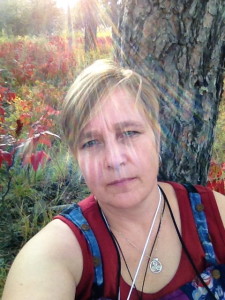 Wow. Forgiveness. That’s a tall order. Could I find it in myself and invite it in others?
Wow. Forgiveness. That’s a tall order. Could I find it in myself and invite it in others?
I stood up and continued walking. Further along the path was a ravine – a dried up riverbed coming from the top of the hill. At the bottom of that ravine were broken sticks and pine cones. Just like the red leaves had become blood, those sticks and pine cones became the bones of generations of women who have been killed – some of whom have been and continue to be dragged from the river in my own home town in recent weeks. (Including Tina Fontaine, a 15 year old girl found in a plastic bag in the Red River, who had been exploited and murdered.)
I climbed down into the river, determined to carry some of those bones with me as reminders. As I began to climb out, dead shrubs reached out like hands pulling at my skirt, determined to keep me there along with the bones of my sisters. I knew it was partly my own story – the rape I suffered at the hands of an Indigenous man – trying to keep me trapped, trying to keep me in a place of deadness. But I also knew that I’d been through a long journey of forgiveness and had no more reason to stay at the bottom of that river.
After I left the hills and went back down to rejoin my sisters, I wondered what to do with my story. Should I share it with the other women or should I keep it to myself for my own meaning-making? I shared it with a few women over dinner, and they encouraged me to share it more broadly, but I still wasn’t convinced.
Part of me believed that I was meant to invite other women into the hills for their own weeping and path to healing, but I just wasn’t sure. That night I had a dream that I did just that, and it was a disaster. People kept interrupting us on their way to a cafeteria that had appeared on the hill. And none of the women felt free to release their emotions in such a busy place. There was no freedom, no healing, just busy people leading busy lives.
The next morning before breakfast, I went back up into hills to pray and ask for guidance about what I should do next.
When I got to the base of the river of blood, I felt compelled to walk up through the river to find the source. I climbed to what I thought was the top, and there was a large pile of trees that had been cut down. “That makes sense,” I thought. “The blood is flowing from what we have cut from the earth and cut from ourselves.”
But there was more hill ahead of me. I hadn’t reached the source. I kept climbing. This time, at the real summit, there was something much different. A circle of benches. A place where people come to heal. A place where people come to be in community and to speak from their most authentic stories. A place where people learn to forgive.
Ahhh… this is the healing circle that is pouring healing blood down on the hills. The womb of the mother out of which new life is birthed.
As I stood looking at the circle and taking in this new message, something happened that shook me to my bones and made me weep again. Very close and very loud – a single gunshot.
Suddenly I was terrified. Was I safe? Was there a hunter in these woods who would mistake me for a deer? Would my own blood be shed on this hill? Or was the hunter after a cougar I’d been told could be in these hills and I was at risk of both cougar attack and misplaced gunfire?
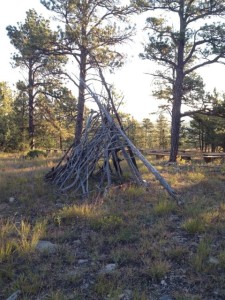 Near the circle was a teepee someone had built out of fallen logs. Full of emotion and fear, I crawled into the centre of the teepee. There I suddenly felt safe, held in the womb of the Great Mother. Surrounded by love and not fear.
Near the circle was a teepee someone had built out of fallen logs. Full of emotion and fear, I crawled into the centre of the teepee. There I suddenly felt safe, held in the womb of the Great Mother. Surrounded by love and not fear.
Later that day, I knew what I needed to do. I needed to invite other women to the hill.
So I shared my story and said “for any of you who feel the need to weep with me, for all of women’s pain and for your own, join me at 4:00 and we will walk up the hill.”
Several said they’d join me. Others said they wouldn’t or couldn’t but that they would hold us in their prayers while we made the journey.
I had no idea what we’d do when we got up the hill, but I had a sense that we needed some kind of lament ritual, and that the journey up the hill needed to be treated like a pilgrimage or labyrinth walk – releasing, receiving, and returning. Some of the wise women who couldn’t make the hike up the hill gave me little words of wisdom. “Be sure to give them a way of weeping unhindered and safe – a shawl to place over their heads that shields them from everyone else.” “Take something with you to cleanse the space and to bring people back to a place of groundedness afterward, like sage perhaps.”
Gradually, trusting that I was given the wisdom I needed to host this pilgrimage, I leaned into it. When the women gathered, I invited Tubears, a wise elder from Reno, to offer a prayer for all of us. We stood holding hands as she prayed, and then I invited each woman to express which stories were on their hearts – their own or other women’s. “Start a sentence with ‘I carry with me the stories of…’ and share one little piece of what you’re carrying up the hill.”
And then, in silence, we walked up the hill. At the foot of the river of blood, I invited them to wander in silence for awhile and to simply be open to what the hill wanted to say to them. After 10 minutes, I called them back together and said, “Now we are going to move into a lament. We are going to release some of the pent up emotions we’ve denied ourselves, some of the tears we’ve been afraid to shed, some of the pain of witnessing our sisters’ deaths and rapes. It may feel funny at first and you may need to fake it for awhile, but simply allow it to feel weird and carry on. This is counter-cultural. It’s not going to feel normal. Simply allow whatever comes up for you to be okay and safe in this place with your sisters. Sit where you feel safe and held, close enough to us to know that you are in community, but far enough away that you have some solitude. Cover your head with your shawl if you wish, and weep. Once the time is up, I will come to each of you and place my hand on your head. That will be your invitation to emerge out of your weeping and return to the circle.”
Women spread out over the hill and found their places. We began to weep and wail, some loudly, some more at the level at a hum. In some moments it felt fake and put-on, but in other moments deep convulsions of remembered pain welled up and we were weeping for real. I wept for some of my clients who are healing from deep wounds and historic pain. I wept for a beloved sister-in-law who’s been on a long healing journey. I wept for my daughters and nieces who still have so much to navigate as they come into adulthood. And I wept for the women I’d met in Ethiopia and India and the women from my country being found in the river.
When it felt like the right time, I rose and walked from woman to woman, gently placing my hand on their heads and holding it there like a blessing and invitation, reminding them that they were safe and held in love as they came out of their lament.
We gathered in circle once again, did some deep breathing exercises to release some of the heaviness, and then I invited my friend and co-guardian Hali to offer a cleansing smudge for each woman. Then we passed a talking piece – a stone I’d found on the hill that at first felt like a blade in my hand but then transformed into the shape of a woman as I held it. I invited them to each speak of one thing they were taking with them from this experience.
“When you exit a labyrinth, after you have received what was in the centre for you, you walk slowly in your return to the world, integrating this new wisdom or calling into your hearts and your bodies. I invite you to walk slowly in silence down the hill. Take the time you need. Do the self care that will help you be gentle with yourself. Don’t rush into telling other people about this experience until you are ready for it.”
Slowly and individually, we made our way down the hill. When we got there, I tried to enter into dinnertime conversation, but it just didn’t feel right. Instead, I disappeared from the table and went first to the quiet room where our circle of chairs were and then went to my room to have a hot bath.
I’m not sure what this will mean for the women who were with me. Many of them shared how meaningful it was and how it cracked their hearts open, but mostly I am expecting that they will process it in their own way in their own time. They are each on their own journeys, and if this at least helped them honour their wounds in a new way and seek healing for something unspoken, then they are on the right path. Some might be frightened of the wound and need therapists or other healing practices that help them process what’s been opened up.
I know, though, that this will change my work. I’ve received a new calling – or perhaps a deepening of a calling I knew I already had. A few years ago, I heard a woman from the stage say the words “The world needs people who know how to navigate in the dark” and I knew then that her words were meant for me. I’ve known for quite awhile that part of my work was to help people walk through the shadow, through the grief, and through the wound.
This isn’t easy work – because few people want to be invited into darkness – but it is essential work and I know I need to do it.
I shouldn’t have been surprised, then, when, in the very first coaching session I had after my return to work, a woman who ostensibly wanted to talk about how much she wanted to change her career, revealed only a short time into our conversation that her restlessness was more about unhealed wounds and a darkness she was afraid to enter into than it was about her career.
And then yesterday, as I was washing the dishes, a hit of inspiration arrived. I will be creating a new course that will be somewhat like Mandala Discovery (where you receive a prompt every day) but will invite women to journal and/or do art-making prompts as they take a figurative journey that resembles a labyrinth walk. It is tentatively called “A Spiral Path: A Woman’s Journey to Herself“.
I also expect that there will be upcoming retreats based on this theme. AND there has already been an invitation to help create a lament for women on a fairly large scale at an event next year. If you want to learn more about any of this as it unfolds, add your name to my email list (at the bottom of the page) and I’ll keep you informed.
Also, if you are interested in how an openhearted writing practice can help you through this journey, join me for a one day online Openhearted Writing Circle on Saturday, October 4th.
Blessings to you wherever you are in this journey.
by Heather Plett | Sep 16, 2014 | Community, Leadership
“Keep away from people who try to belittle your ambitions. Small people always do that, but the really great make you feel that you, too, can become great.” ~ Mark Twain
Tomorrow, after I teach a storytelling workshop for a national non-profit, I’ll be heading out on a special annual pilgrimage. A twelve hour road trip in good company will take me to the Black Hills of South Dakota, where I will gather once again with the women of Gather the Women.
This will be my third year in this circle of women. I can hardly wait to be with them again. When I am in this circle, I feel fed, held, honoured, encouraged, and strengthened. Even though we only see each other once a year, women in this circle have supported me through the grief of losing my mother, encouraged me in the growth of my business, and cheered for me every time I’ve done something brave.
But the primary reason why I keep going back?
They call me into my greatness.
These women want me to succeed. They want me to be bold, strong, and successful. They want me to make a mark in the world. They believe wholeheartedly in my work and cheer with their whole hearts when I do it well.
Why? Because MY work is OUR collective work. And because when I succeed, we ALL succeed.
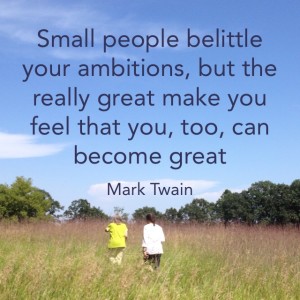 That’s the way it is when you surround yourself with powerful women who aren’t threatened by other people’s power. We succeed together and we leave the world a better place.
That’s the way it is when you surround yourself with powerful women who aren’t threatened by other people’s power. We succeed together and we leave the world a better place.
Are you longing to surround yourself with that kind of support?
I can help. What those women do for me, I want to do for you.
I want to call you into your greatness.
I want to cheer from the sidelines as you succeed. I want to nudge you into those places that feel scary but you know are right. I want to help you find your path.
How can I help you?
1. Come join Pathfinder Circle where you’ll find yourself surrounded by other women who are also daring to find their paths and step into their greatness. (It’s an online coaching circle that meets once a week for 8 weeks, starting September 30th.)
2. If you want to step into your greatness in your writing, sign up for Openhearted Writing Circle. (It’s a one-day online writing retreat, on October 4th, that will help you crack open your heart and pour it onto the page.)
3. If it’s one-on-one support you need, sign up for coaching. If you’re a leader/facilitator/teacher/coach, check out this offering.
Many years ago, when I was in my first leadership position, I realized that helping other people shine is just as good as shining yourself. Because we all benefit from each other’s glow.
Let me help you shine.
by Heather Plett | Mar 21, 2014 | Uncategorized
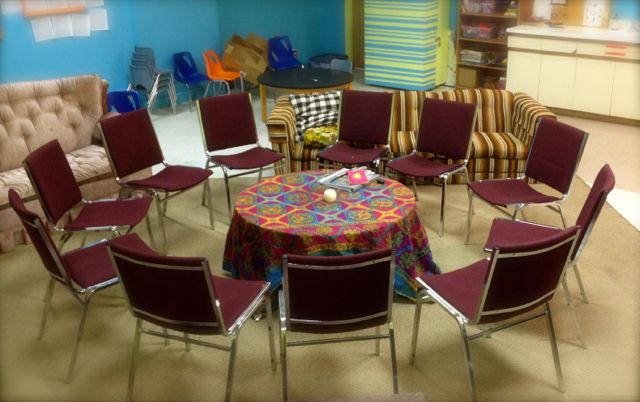 “We must come together in ways that respect the solitude of the soul, that avoid the unconscious violence we do when we try to save each other, that evoke our capacity to hold another life without dishonoring its mystery, never trying to coerce the other into meeting our own needs.” ― Parker J. Palmer, Let Your Life Speak
“We must come together in ways that respect the solitude of the soul, that avoid the unconscious violence we do when we try to save each other, that evoke our capacity to hold another life without dishonoring its mystery, never trying to coerce the other into meeting our own needs.” ― Parker J. Palmer, Let Your Life Speak
All around us, there is a hunger for belonging, a hunger for community, a hunger to be held in circles of grace where we can open our hearts and know that we will be treated tenderly and respectfully. Some of us have not yet awakened to that hunger, believing instead that we can go through life as independent, self-reliant souls. It’s there, though, hidden under the armour we’ve built up in our efforts to avoid being wounded.
To feed this hunger in the world, we need to create more places where people are fed. These are the places I call Circles of Grace.
A Circle of Grace is a place where people gather for meaningful conversation, for compassion, for support, for encouragement, and for growth. While in the circle, we do our best to extend grace to everyone there, including ourselves. We speak with openness and listen with intention. We make a commitment within the circle to be as authentic as we know how to be, and we welcome the same from others. We share, laugh, cry, grow, stretch, and tremble. Even when we disagree and conflict arises, we respond with compassion and open hearts and minds.
A Circle of Grace can be hosted as part of a retreat, it can be the frame for a weekly class (as I do with Creative Writing for Self-Discovery), it can be a way for your family to work through some difficult issues, it can be the way a community or church gathers regularly, and it can even be used in virtual gatherings (as I do with Openhearted Writing Circle).
How do you host a Circle of Grace? Here are some tips.
1. Create enough structure to hold the container, but enough flexibility to adapt to what wants to emerge. The best structure I know of can be found in PeerSpirit’s Circle Guidelines (which you can download for free). Sometimes it feels a little strange to bring structure into something that seems organic, but the structure helps you hold whatever is going on in the circle and helps you take conversation to a deeper place without falling into chaos. You can adapt the structure to what needs to happen in the space. For example, I always use a talking piece at the beginning of a gathering for check-in and at the end for check-out, so that each person has an opportunity to speak without interruption, and then I set it aside in between for less structured conversation.
2. Set guidelines and intentions so that everyone has a sense of their commitment while in circle. Guidelines help us feel more secure in the container because we know how to behave with each other and know what to expect from others. This is a sample of the guidelines and intentions I use when I host Openhearted Writing Circles:
- This is a circle of grace. It is a safe space for all of us, and to make it so, we will treat each other with kindness and grace.
- This is a confidential circle. Nothing that is shared here will leave the circle without the permission of the person speaking.
- This is a sharing circle. Each of us will be invited and encouraged to share questions, wisdom, writing, etc. Nobody will be pushed to share if they don’t feel ready, but everyone will be invited.
- This is a learning circle. We are all here to learn, and so no questions will be considered foolish and no wisdom shared will be silenced. We are all learners together, including the teacher.
- This circle belongs to each of us. Each of us is individually and collectively responsible for how we interact, what we share, and what we get out of this time together.
3. Keep an open mind and suspend judgement. It is important that everyone in the circle feels safe and accepted. This doesn’t mean that any kind of behaviour is acceptable (the guidelines and intentions help with that), but it means that people can share their stories, hurts, and wounds without fearing that they are being judged. Sometimes that will be hard to do (e.g. when someone shares an opinion or worldview that is very different from your own and you’re pretty sure they’re wrong) but it is crucial to extending grace in a meaningful way.
4. Don’t try to fix anyone. As Parker Palmer mentions in the above quote, we need to “avoid the unconscious violence we do when we try to save each other”. When others share the struggles they are dealing with, it is human nature to want to help them resolve those struggles, but more often than not, they are sharing in order to feel heard rather than to be fixed. According to Brene Brown in Daring Greatly, these efforts to fix each other are our defenses against vulnerability. We are afraid to see too much vulnerability in each other and in ourselves, and so we try to rush past the brokenness to a place where we feel more comfortable and struggles are resolved. In a Circle of Grace, we welcome vulnerability and we offer support without trying to fix.
5. Encourage people to ask for what they need. While we don’t rush in to fix things for people, we are happy – as hosts and co-creators of the circle – to respond to their requests if they ask for hugs, advice, encouragement, or silence. Create a space where people learn to be comfortable asking for what they need. This will probably take time (most of us have been taught to stifle our needs and not to extend trust to each other too quickly), but it’s worth the investment.
This is part of a document I am creating for people who wish to use Pathfinder in women’s circles and classrooms. It will be available as a free downloadable pdf. To be notified of its release, sign up for my newsletter (on the top right of this page).
If you wish to learn more about hosting circles, I encourage you to read The Circle Way by Christina Baldwin and Ann Linnea of PeerSpirit, or A Hidden Wholeness by Parker Palmer.
by Heather Plett | Mar 1, 2014 | women
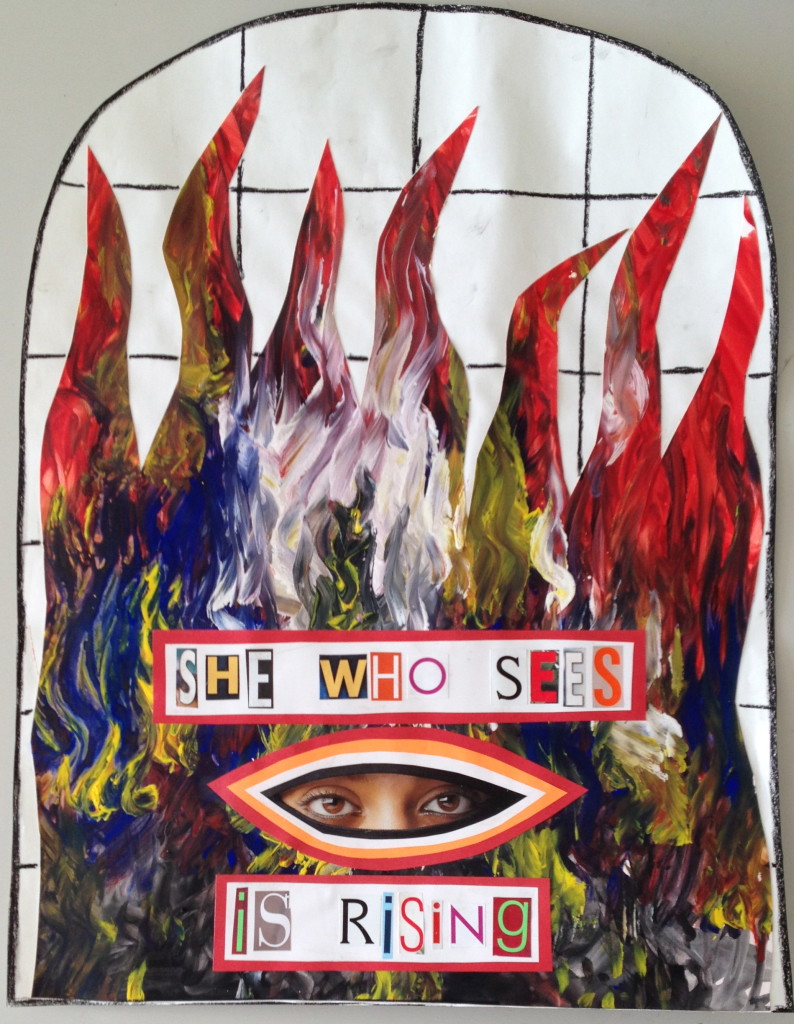 At my recent person retreat, I played with art supplies in the art room, and this piece of art emerged. What’s written below comes directly from the pages of my journal, intuitive and uncensored.
At my recent person retreat, I played with art supplies in the art room, and this piece of art emerged. What’s written below comes directly from the pages of my journal, intuitive and uncensored.
She Who Sees is Rising
It all started with the shrouded eyes, staring out at me from the front cover of a magazine. A woman hidden by a burka, and yet her eyes are watching. Seeing. Learning. Spying. Waiting.
She is silent now, shrouded by the patriarchy. Shrouded by those who are afraid of her power. She is hidden, draped in black, her sensuous curves too dangerous for the men who want her, who deny themselves her beauty. She is oppressed, beaten, raped, tortured, abused. She is mined for her resources, used for what she can offer. And then hidden, pushed aside.
They are afraid of her. She is too powerful. She is fierce and wild and untameable. She is a feral creature, gnashing her teeth at her captors. They fear her and so they trap her.
But from the bars of her cage, she is always watching. Waiting. Holding her strength in reserve for when she is ready. Waiting for the sisterhood to come of age alongside her. Waiting for the power to build up until the pressure valve erupts and she explodes into the world.
She is ready. Her sisterhood is gathering. Her captors are losing their power. They are wasting their strength, fighting each other and building their fragile empires.
She will rise. She will emerge like a phoenix from the flame. No cage will be able to hold her. No shroud will be able to hide her.
She will rise and take her rightful place. She will birth herself into the world. She will hold nothing back.
In her rising, she will silence the oppressors and then she will bandage their wounds. She will halt the destruction of the earth and then she will invite the destroyers to gather round the campfire.
She is fierce and she is a healer. She is powerful and compassionate. She will not hold back and she will offer a soft place to land. She will destroy and she will rebuild. She will fight and she will gather. She is a warrior and a lover. She is dangerous and she is safe. She is bold and she is humble.
She is rising. Her sisterhood rises with her. She will no longer be silent. She will no longer wait for her turn to speak. She will no longer watch her sons go to needless wars. She will no longer let her Mother be raped for her resources.
She is me. She is every woman. She is power. She is love. She is our future. She is our ancient lineage. She is our forests. She is our hearths. She is our food. She is our food. She is our hope. She is our beloved. She is rising.
We rise with her.
by Heather Plett | Feb 6, 2014 | Beauty, circle, Creativity, Uncategorized
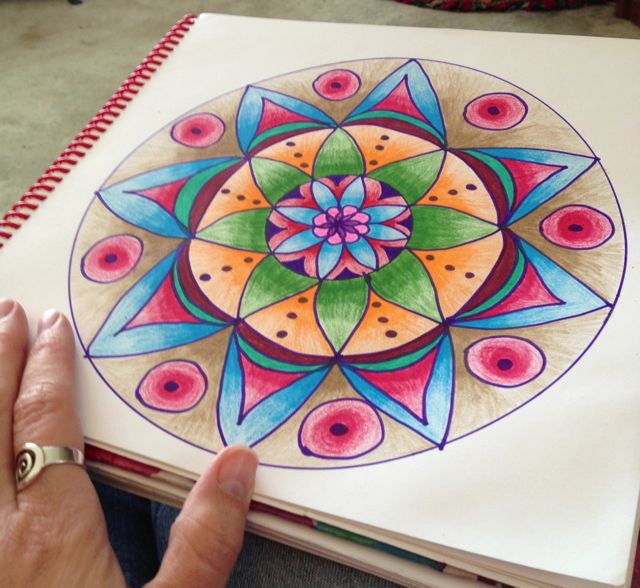 I see more and more women (and some men) who are finding their way back to the things they love to do – painting, dancing, writing, hosting, horseback riding, hiking, taking pictures, acting, etc.
I see more and more women (and some men) who are finding their way back to the things they love to do – painting, dancing, writing, hosting, horseback riding, hiking, taking pictures, acting, etc.
I work with a lot of these people, in my coaching and workshop facilitation, and I love to see the delight in their eyes when they talk about what they truly love to do. Some, for example, sit in my Creative Writing for Self-discovery circle and talk about how writing poetry feels like a homecoming – like something they’ve been longing for but didn’t know they were missing. Others start playing with mandalas and can’t believe how much joy it brings them to hold pencil crayons in their hands again.
Almost always, though, I see that delight in their eyes fade when I ask them “why don’t you do more of it?” They stammer a reply that sounds remarkably similar to all of the other excuses I’ve heard (I’m too busy, it makes me feel guilty, my partner makes fun of me, I can’t take the time away from my kids, etc.). And when they come back a week later, they sheepishly say “I wanted to do the homework, but couldn’t find the time.”
The bottom line is that they have been fed a lie that what they love to do is trivial. It’s the thing you do only if you have time after all of the important things are done. It’s just a hobby, so shouldn’t be taken as seriously as washing the dishes or crunching numbers at the accounting office you work at.
I have struggled with this lie in my own work too. Sure I teach transformational workshops online and off, but it’s not really that important, is it? It’s just stuff people do on the fringes of their lives – it doesn’t fit in the “mainstream” where people are doing real work. Even though I believe in it deeply and know it can transform people and communities, I have trouble marketing my work in the corporate world, because… well… won’t people make fun of me for trying to sell something so trivial in a serious environment?
Mandala journaling? That’s fine for people with time on their hands, but don’t try to get a serious corporate executive to colour in a circle. It’s far too trivial for someone with an important job title. Gathering in circle? Oh that’s just for women who aren’t doing the big, important work in the world. It’s not going to fly in places where people are having tough conversations and changing the world.
But it’s all a lie, and I know that. It’s the lie the patriarchy has been telling us for hundreds of years to keep us silent and to keep us from changing the accepted structures and heirarchy. It’s a lie we’ve been fed again and again, since childhood, and we don’t know how to change it because we’ve received so many wounds over it, we’ve learned to hide our hearts and keep our deepest loves secret.
Imagine if we could rise out of the shame and the fear and truly believe in what we love to do.
Imagine if we could convince governments to move their chairs into circles and have real conversations instead of the polarizing shouting they do at each other from across the room. Imagine if business meetings started with some quiet journaling or mandala-making. Imagine if there was daily dancing in the corporate offices downtown. Imagine if the heads of corporations and governments had to go on vision quests or self-discovery retreats before they could be trusted to lead.
It’s hard to imagine, isn’t it? Your first thought, like mine, was probably “oh, it would never work”. But what if every time we heard that voice of resistance in ourselves, we recognized it as the voice of the patriarchy trying to silence us, and we challenged it instead of accepting it?
A few weeks ago, I co-facilitated a weekend stakeholder consultation for a national association of city planners. Because we knew it would be a difficult conversation, we encouraged them to use circle to ensure that everyone was heard. There was some reluctance to our recommendation, but fortunately we had an ally on the planning committee, and so we went ahead with it. The circle transformed the way they gathered. People made positive contributions throughout the weekend because they felt heard. Important decisions were made AND people felt valued and hopeful.
The circle is NOT too trivial for people who are making important business decisions. In fact, I think it’s imperative.
A few years ago, I was facilitating a team planning retreat for a non-profit, and I invited everyone to start with some simple yoga poses, and then we played with modeling clay and tried to envision our future through clay. Halfway through, one of the people in the room said, “but when are we going to do the real work?” He was anxious to get to the strategic planning we needed to do. I didn’t say much, but when we were finished, we looked at each other’s clay creations and saw a great deal of vision for where the team needed to move. “Oh, I get it,” said the person who had resisted. “This IS the real work.” Yes, it is. We saw more vision emerge from the pieces of clay than we would have in a traditional brainstorming session.
Art-making and yoga are NOT too trivial for people doing world-changing work. In fact, I think it’s imperative.
It’s taken me years to stop believing the lie (and it still creeps in now and then), but I believe that the world is crying out for us to do this work. It’s transformational for EVERYONE, not just the people with time on their hands after the real work is done.
It starts by changing us individually, and with that as a base, it can change governments, change international relationships, change the way we treat our earth, and change our communities.
I believe it’s imperative. The world needs this kind of change. And it will have to start with a healing of our collective wound and a new belief that this is worthy work we are doing.
If you are on the path to the work you love, or you want to step onto that path, consider a journey through Pathfinder.
If you want to practice openhearted writing, consider joining a small, intimate virtual circle on Friday, February 14th.
 Something happens when women come into circle.
Something happens when women come into circle. Up in the hills, I noticed an interesting thing. The hills were covered with low shrubs that had turned a brilliant shade of red (that I later learned were sumac) and had grown equally red seed clusters.
Up in the hills, I noticed an interesting thing. The hills were covered with low shrubs that had turned a brilliant shade of red (that I later learned were sumac) and had grown equally red seed clusters. When the weeping subsided, I opened my journal and began to draw the river of blood. As I sketched, the words came to me… “The river of blood will heal this land.”
When the weeping subsided, I opened my journal and began to draw the river of blood. As I sketched, the words came to me… “The river of blood will heal this land.” Wow. Forgiveness. That’s a tall order. Could I find it in myself and invite it in others?
Wow. Forgiveness. That’s a tall order. Could I find it in myself and invite it in others? Near the circle was a teepee someone had built out of fallen logs. Full of emotion and fear, I crawled into the centre of the teepee. There I suddenly felt safe, held in the womb of the Great Mother. Surrounded by love and not fear.
Near the circle was a teepee someone had built out of fallen logs. Full of emotion and fear, I crawled into the centre of the teepee. There I suddenly felt safe, held in the womb of the Great Mother. Surrounded by love and not fear.



